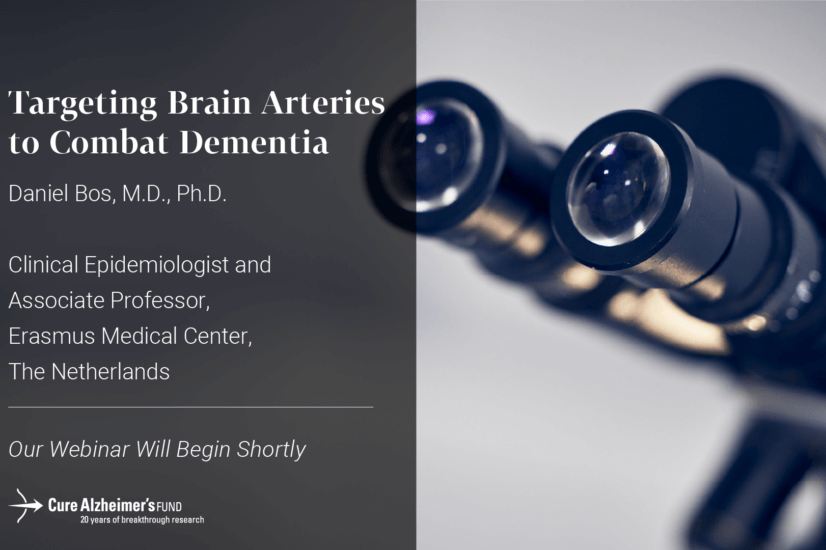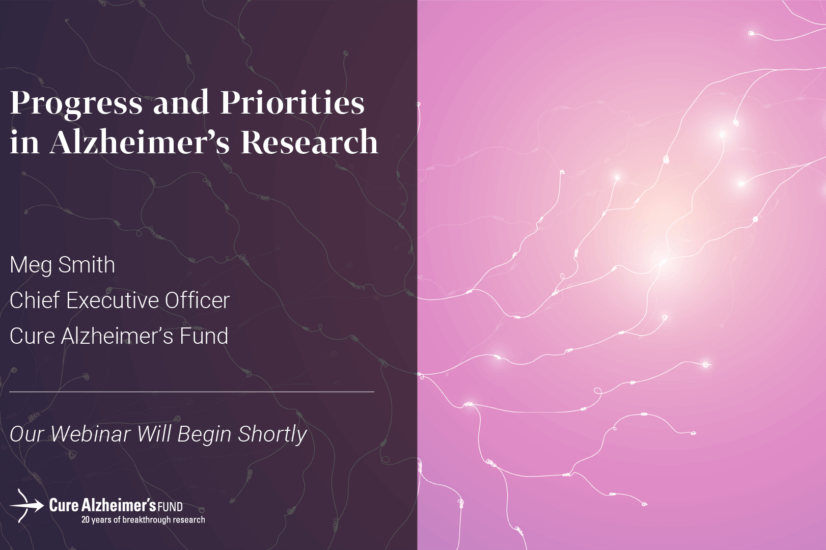Fast-Track Research Effort Hopes to Map Genes Affecting Risk for Alzheimer’s Disease within 18 Months
Is A Cure Around the Corner?
Private-Venture Philanthropy Model Changing the Face of Medical Research
BOSTON – On the eve of the 100th anniversary of the discovery of Alzheimer’s disease, medical researchers are in a sprint to map and sequence the genes susceptible to Alzheimer’s, leading to more aggressive therapeutic interventions to slow, stop or even reverse the effects of the disease. It is a race that must be won in the next few years if we are to save up to 16 million baby boomers from the devastation of the disease, says Dr. Rudolph Tanzi, lead researcher for the Cure Alzheimer’s Fund.
“As baby boomers move into the age of highest risk, our nation will have more people growing older and more people living longer, and a burgeoning public health crisis,” said Dr. Tanzi, professor of neurology at Harvard Medical School and director of Genetic and Aging Research at Massachusetts General Hospital. “Fortunately, we are on the cusp of a rare ‘science moment,’ when intensive research could yield a breakthrough for an Alzheimer’s cure.”
Research into the human genome, as well as new gene identification technology, has helped to isolate specific genes that contribute to the risk for Alzheimer’s. In addition, massive amounts of data collected from families afflicted with late-onset Alzheimer’s have provided new clues about how to combat the debilitating disease, which robs the elderly of memory and cognitive skills.
“This is an auspicious time for accelerating Alzheimer’s disease research, in this 100th year since the recognition of the disease by Dr. Alois Alzheimer on Nov. 6, 1906,” Dr. Tanzi said. “We see the light, we know several things. We know what we need to know . . . we just need the money to get the tools to stop this disease.”
Into this breech has stepped Cure Alzheimer’s Fund, a unique venture capital approach to philanthropy that is investing money in Alzheimer’s research without the promise of making a profit. At a time when the federal government has slashed $7 million from its budget for Alzheimer’s research and education, the Cure Alzheimer’s fund has raised more than $3 million, plowing all of it directly into research.
“The only return that the founders of this Fund expect is a cure, a chance to make life better for those families who have been stricken by this disease,” said Jeffrey L. Morby, Chairman of the Board of the Fund. “We have personal stakes in wiping out this disease, and we are happy to underwrite the administration of the Fund so any contributions from others go directly to research.”
Although Alzheimer’s was identified nearly 100 years ago, it was largely ignored for years as families dealt with the disease along with public ignorance and personal shame. It wasn’t until the 1970s that researchers began to focus on the disease, opening the way for drugs that could treat the symptoms.
Then, in 1983, President Reagan launched a national campaign to fight Alzheimer’s, including declaring November National Alzheimer’s Disease Awareness Month. “The emotional, financial and social consequences of Alzheimer’s disease are so devastating that it deserves special attention,” Reagan said. “Right now, research is the only hope for victims and families.”
With Reagan’s own diagnosis of having the disease in 1994, a new impetus was created to find a cure. However, in recent years, the federal drive has lost its urgency, despite the inevitable explosion of baby boomer victims in the near future. For the founders of the Cure Alzheimer’s Fund, however, the time is right for “disciplined funding of targeted research,” Morby said.
“With the stakes this high, we do not believe we can do ‘business as usual,’” Morby said. “We must use our own resources and those entrusted to us by our families and friends to move this research along much faster than it would without us and to keep the focus on the goal of slowing, stopping or even reversing the effects of the disease.”
Dr. Tanzi points out that known Alzheimer’s disease genes account for only 30 percent of genetic activity of the disease. “We need to know all the genes, all the variables,” he said. “The only thing that is holding us up is money.
More than 425 individuals and organizations have contributed to the Cure Alzheimer’s Fund, which has allowed Dr. Tanzi to put together an international team of experts dedicated to finding treatments, and eventually a cure. “Someday in the future, we hope to have a test for Alzheimer’s,” he said. “By 2050, people won’t wait for the disease; they’ll fight first.”
“Finding a treatment that could delay onset by five years could reduce the number of individuals with Alzheimer’s disease by nearly 50 percent after 50 years,” Dr. Tanzi said. “Every day counts.”






